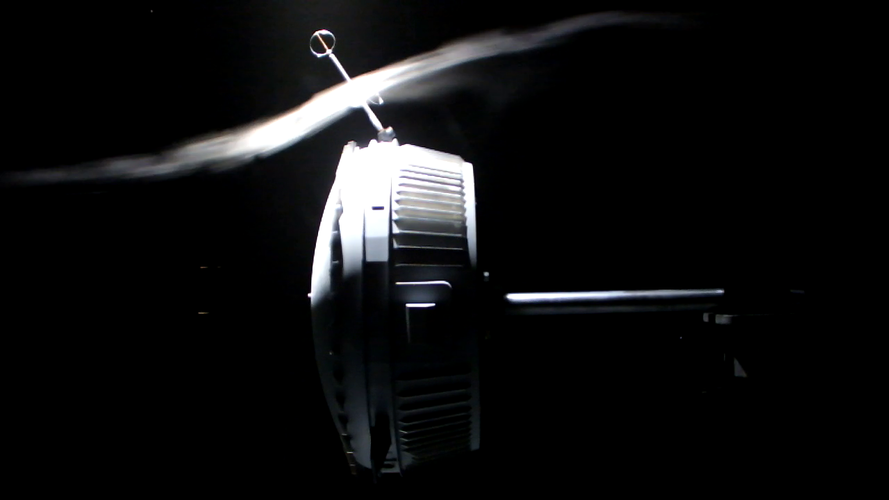
This movie was produced in the wind tunnel at the PRISME Laboratory at the University of Orléans, France, where subsonic testing was performed from 2017 to 2019 to determine how ESA’s Huygens probe spun during its descent to Titan.
As part of the international Cassini mission, Huygens made history on 14 January 2005 when it became the first probe to successfully land on another world in the outer Solar System. However, during its descent, the probe began spinning the ‘wrong’ way – and new results confirm why.
The movie shows how air flows over a 1:3 scale replica Huygens, as visualised using white smoke. Various booms and appendages can be seen around the probe, the most prominent of which – one of the Huygens Atmospheric Structure Instrument (HASI) booms – can be seen towards the top of the probe mock-up.
Huygens was released from Cassini spinning anti-clockwise but, approximately 10 minutes after entering Titan’s atmosphere, the probe’s spin unexpectedly reversed to become clockwise. It kept spinning this way for the rest of the descent; luckily, the magnitude of this reversed spin was similar to that expected by the researchers, meaning that the unexpected flip affected the timing of the planned observations, but did not dramatically affect their quality.
Recent tests now confirm the cause of this flip in spin direction. While the probe was equipped with vanes to regulate its spin, other appendages on the spacecraft produced a torque in the opposite direction. This was only exacerbated by the way in which these vanes redirected the gas flow around the body of the probe, so that an overall ‘negative’, or clockwise, spin effect was created. There are also indications that the HASI booms might have not been fully or symmetrically deployed during descent; this effect is under further investigation.
This study was carried out under an ESA contract with LPC2E/CNRS-University of Orléans.
Click here for original story, Huygens wind tunnel test
Source: ESA Top Multimedia